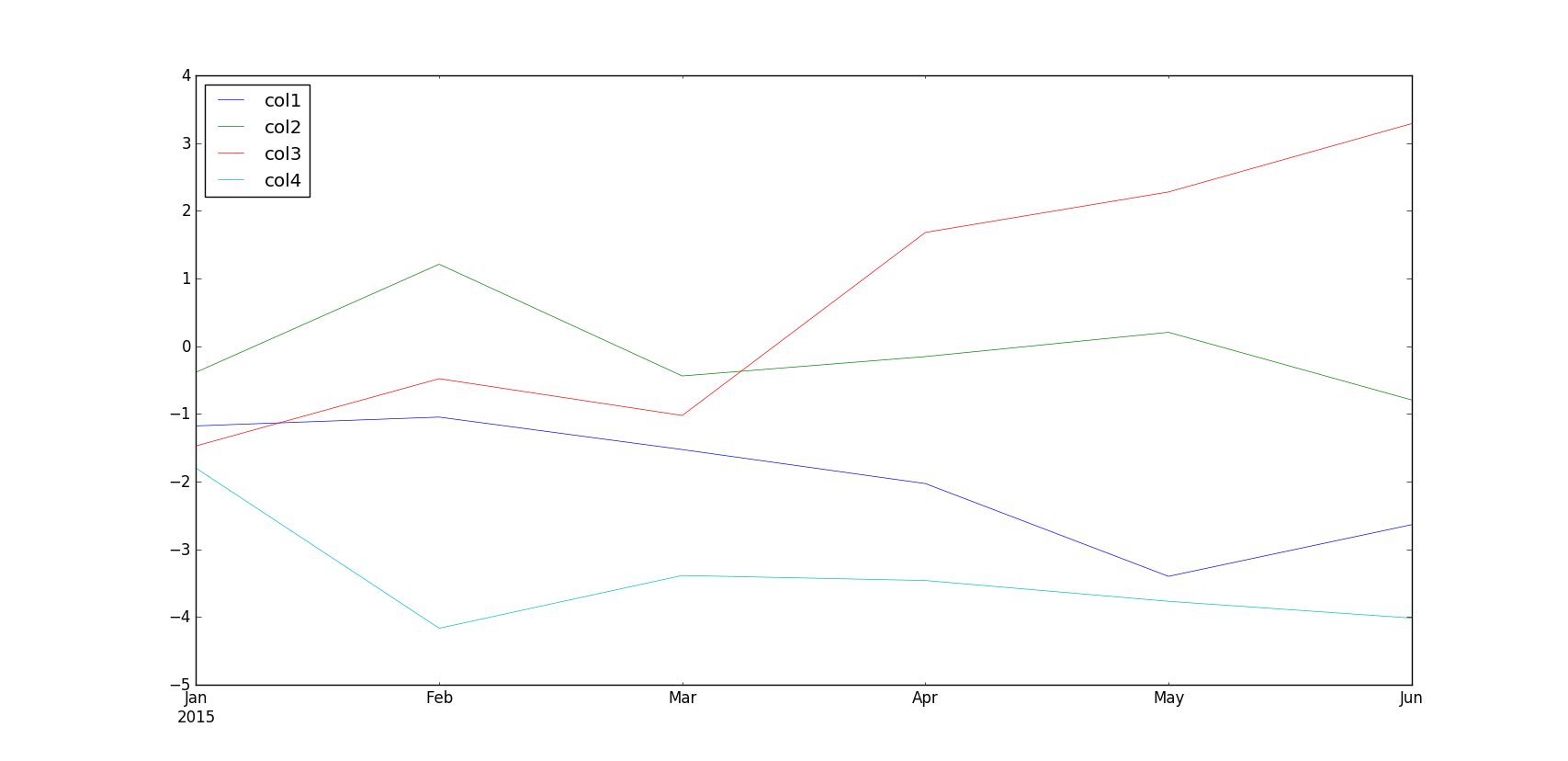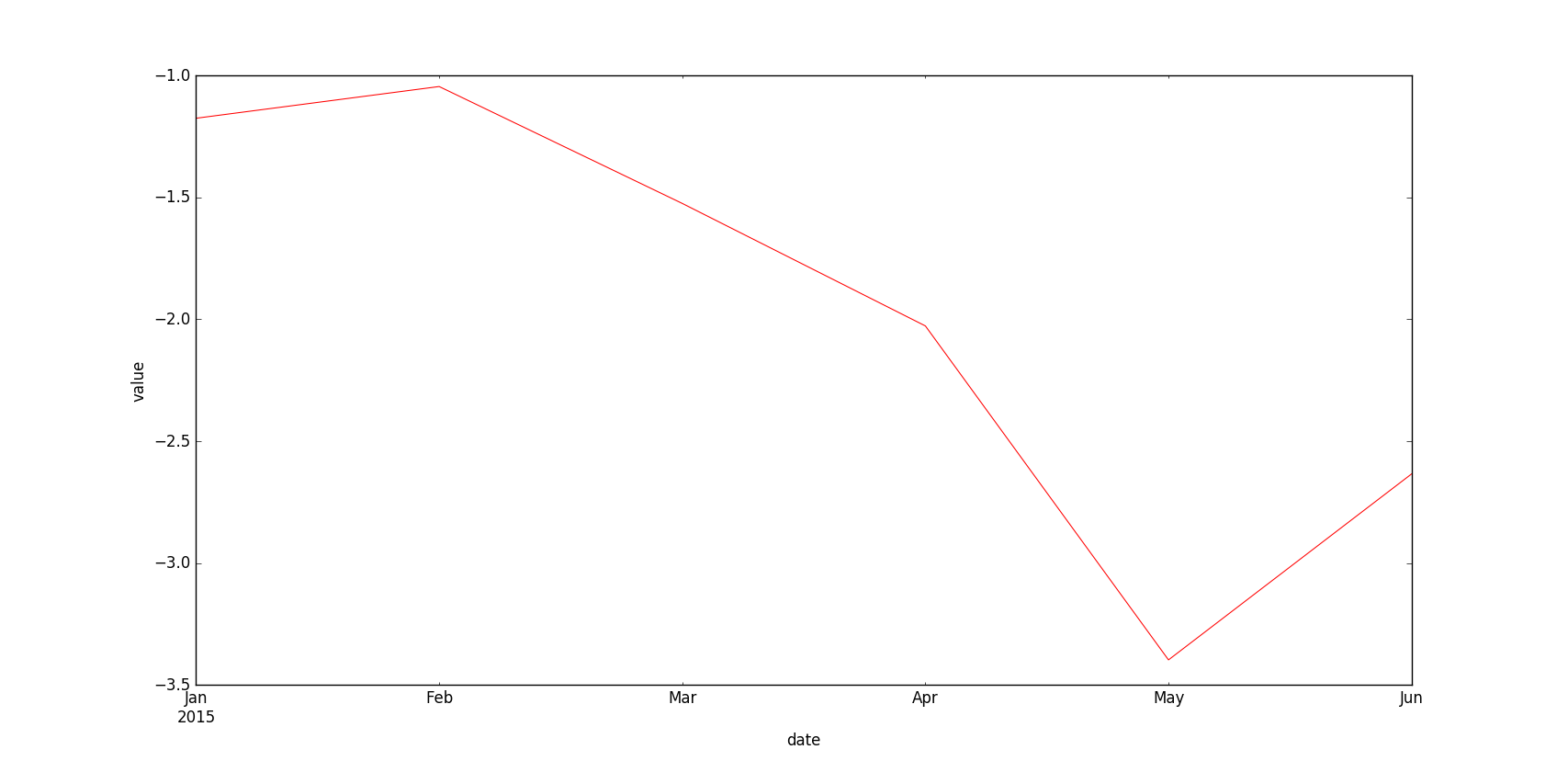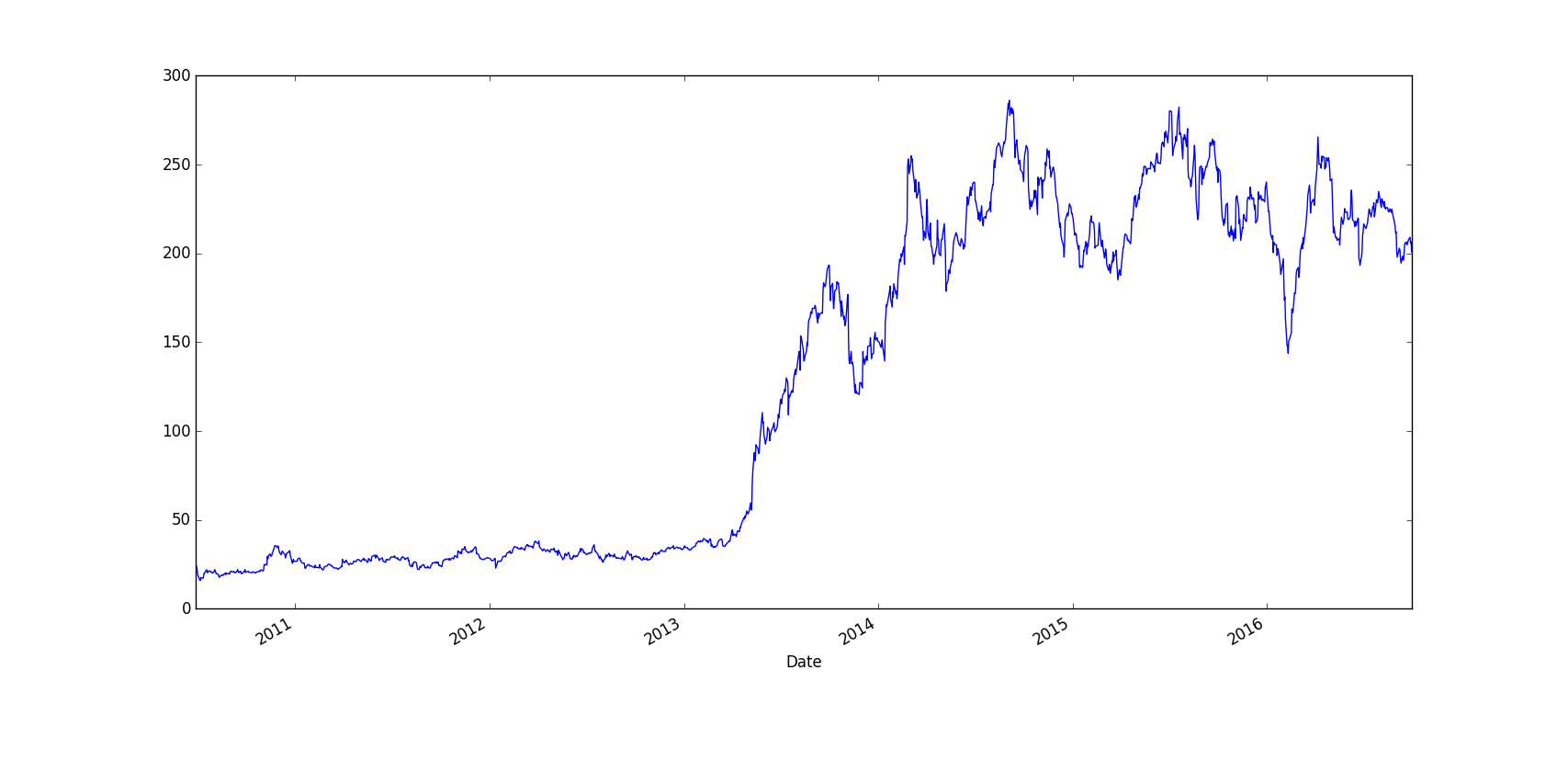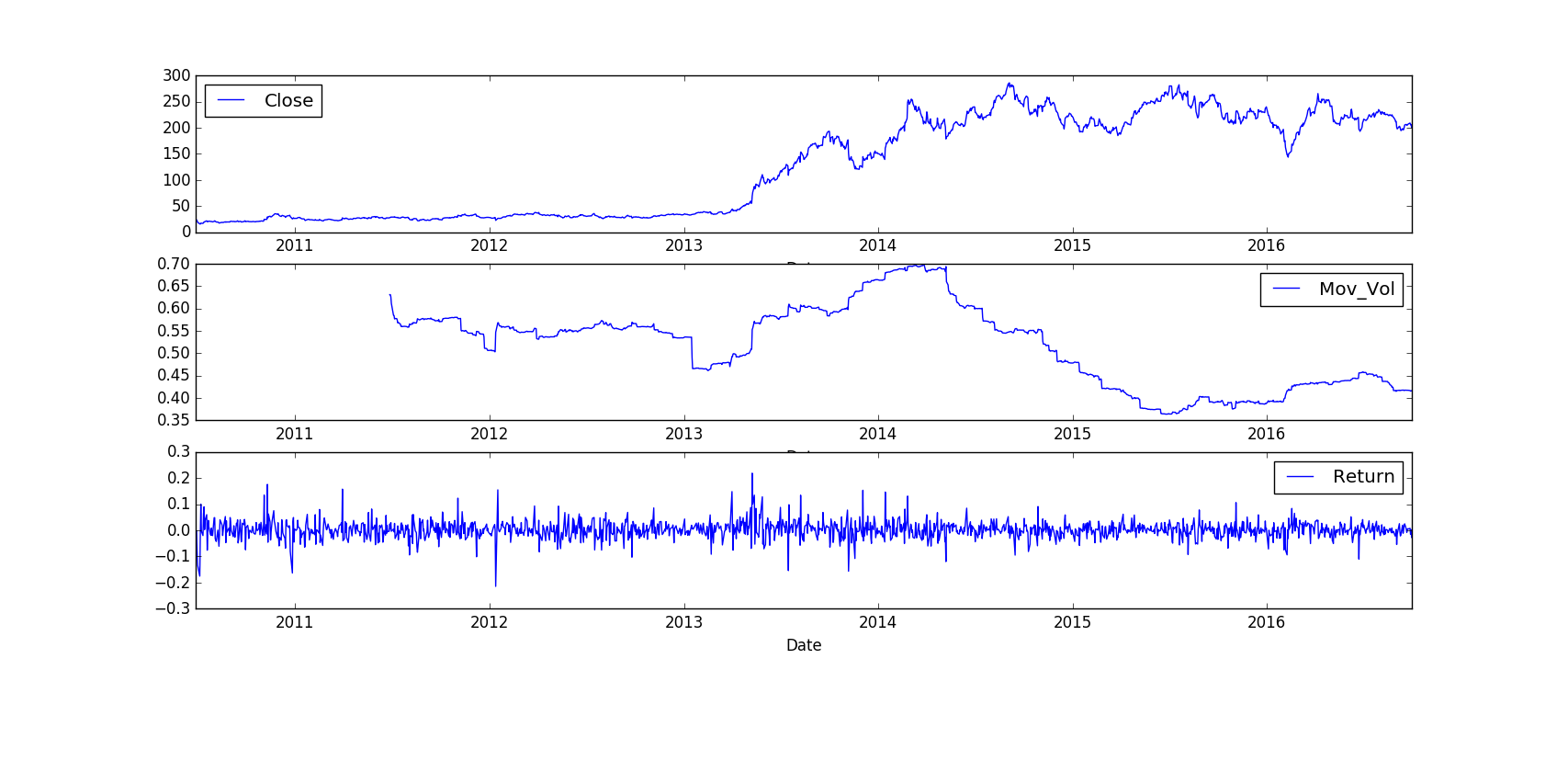Pandas, Finance and Tesla
A demonstration of Pandas’ basic operations and its applications to financial analysis using Tesla’s stock prices.
import numpy as np
import pandas as pd
import mtplotlib as mlp
import matplotlib.pyplot as plt
import pylab
import math
import pandas.io.data as web
# a basic pandas data frame
df = pd.DataFrame([1,2,3,4],columns = ['num'], index=['a','b','c','d'])
print(df.index) # print indices
#Index(['a', 'b', 'c', 'd'], dtype='object')
print(df.columns) # print column names
#Index(['num'], dtype='object')
print(df.ix['c']) # print row entries at index 'c'
#num 3
#Name: c, dtype: int64
print(df.ix[['a','c']]) # print both row entries
# num
#a 1
#c 3
print(df.sum()) # print col sums
#num 10
#dtype: int64
print(df**2) # operation on entire row
# num
#a 1
#b 4
#c 9
#d 16
# add list as column
df['names'] = ['name1', 'name2', 'name3', 'name4']
print(df)
# num names
#a 1 name1
#b 2 name2
#c 3 name3
#d 4 name4
# add data-frame as column
df['age'] = pd.DataFrame([20,21,21,20],index=['a','b','c','d'])
print(df)
# num names age
#a 1 name1 20
#b 2 name2 21
#c 3 name3 21
#d 4 name4 20
# append a new row
df = df.append(pd.DataFrame({'num':5, 'names':'name5', 'age':22}, index=['e',]))
print(df)
# num names age
#a 1 name1 20
#b 2 name2 21
#c 3 name3 21
#d 4 name4 20
#e 5 name5 22
# join two data frames
df = df.join(pd.DataFrame([1,4,9,16,25],
index=['a','b','c','d','e'],
columns=['num_squares'],
how='outer'
))
# num names age num_squares
#a 1 name1 20 1
#b 2 name2 21 4
#c 3 name3 21 9
#d 4 name4 20 16
#e 5 name5 22 25
# matrix (2d numpy array)
np.random.seed(1010)
a = np.random.standard_normal((6,4))
# convert 2d array to a Data Frame
df = pd.DataFrame(a)
# rename column names
df.columns = [['col1', 'col2', 'col3', 'col4']]
# accessing values from data frame
print(df['col1'][0])
print(df['col2'][1])
# a series of dates (6 entries with monthly frequency)
dates = pd.date_range('2015-01-01', periods=6, freq='M')
# make dates index of df
df.index = dates
# stastical description of data
print(df.describe())
#prints:
"""
col1 col2 col3 col4
count 6.000000 6.000000 6.000000 6.000000
mean -0.439114 -0.132052 0.548143 -0.668961
std 0.797948 1.141929 1.437197 1.175838
min -1.370103 -1.650382 -1.471366 -2.363707
25% -1.007238 -0.844945 -0.258105 -1.427126
50% -0.491101 -0.048629 0.795605 -0.277292
75% -0.022323 0.340413 1.005238 -0.117834
max 0.762969 1.595619 2.703237 0.779611
"""
# plotting
fig,ax = plt.subplots()
df.cumsum().plot(ax=ax, lw=0.5)
plt.show()
# Plot of all the four columns (y) with respect to date (x)
df['col1'].cumsum().plot(style='r', lw=0.75)
# data frame grouping
df['groups'] = ['g1', 'g2', 'g1', 'g2', 'g1', 'g2']
groups_df = df.groupby('groups')
print(groups.df.size())
#Quarter
#g1 3
#g2 3
#dtype: int64
print(groups_df.mean())
# col1 col2 col3 col4
#Quarter
#g1 -1.008381 -0.558314 -0.472269 -0.442585
#g2 0.130153 0.294210 1.568554 -0.895336
TESLA = web.DataReader(name='TSLA', data_source='google', start='2010-01-01')
print(TESLA.tail())
# Open High Low Close Volume
#Date
#2016-09-23 205.99 210.18 205.67 207.45 2905229
#2016-09-26 206.50 211.00 206.50 208.99 2394358
#2016-09-27 209.65 209.98 204.61 205.81 3373180
#2016-09-28 207.51 208.25 205.26 206.27 2088374
#2016-09-29 205.60 207.33 200.58 200.70 2727029
fig,ax = plt.subplots()
TESLA['Close'].plot(figsize=(7,5))
plt.show()
# plot of Tesla's closing prices
# computing and plotting returns
TESLA['Return'] = np.log(TESLA['Close']/TESLA['Close'].shift(1))
TESLA['42d'] = pd.rolling_mean(TESLA['Close'],window=42)
TESLA['252d'] = pd.rolling_mean(TESLA['Close'],window=252)
TESLA['Mov_Vol'] = pd.rolling_std(TESLA['Return'], window=252)*math.sqrt(252)
# as market goes up volatitiy comes down and vice-versa
TESLA[['Close','Mov_Vol','Return']].plot(ax=ax, subplots=True, style='b', figsize=(8.5))
plt.show()



